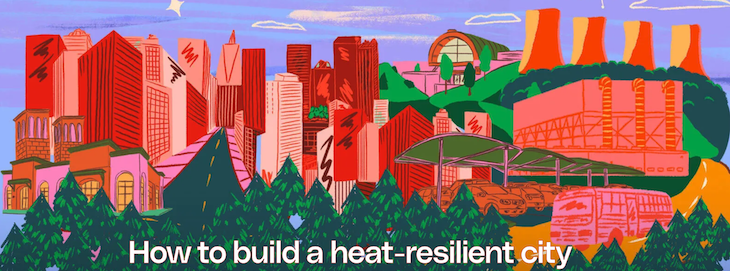Model metropolis for an era of high temperatures
This story was co-published with Gizmodo. It is also part of Record High, a Grist series examining extreme heat and its impact on how — and where — we live.
Cities are hot. When you cover the ground with asphalt and concrete, jam millions of cars together on congested streets, and erect thousands of buildings that leak their own heat, you create what experts call an “urban heat island.” Daytime temperatures in these places can be as much as 7 degrees Fahrenheit [~3˚C] higher than surrounding rural areas, and things don’t get much cooler at night.
As climate change fuels a succession of historic heat waves, the urban heat island effect in many American cities is pushing the limits of human survivability. That’s the case in desert cities like Phoenix, where temperatures crested 110 degrees F [~43˚C] for 30 straight days this summer, and also in cooler climes like Chicago, which has seen a series of scalding triple-digit weeks over the past few months.
Read more on GRIST – Climate. Justice. Solutions. Read about their suggestions regarding: SHADED STRUCTURES, TREES, MISTERS, COOL PAVEMENT, URBAN CANYON EFFECT, REFLECTIVE GLASS, GREEN WALLS, AIR FLOW; WINDOW FILMS AND AWNINGS, COOLING TOWERS, REFLECTIVE SURFACES, COVERED PLAYGROUNDS, CONSTRUCTION MATERIALS, WASTE HEAT CAPTURE, BUFFER ZONES, PUBLIC TRANSIT, SOLAR PANELS ON PARKING, GREEN ROOFS AND WALLS => LINK


Leave a Reply